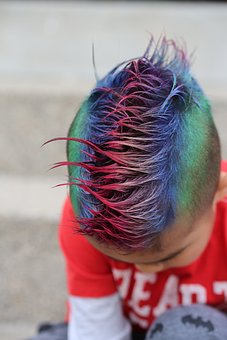 Every year when the prom comes around, mothers, aunties, even friends help girls fix their hair so they will look spectacular for the event. This means the hair is curled and hair sprayed within an inch of its life. These girls could be on a snow machine and their hair wouldn't move an inch out of place.
Every year when the prom comes around, mothers, aunties, even friends help girls fix their hair so they will look spectacular for the event. This means the hair is curled and hair sprayed within an inch of its life. These girls could be on a snow machine and their hair wouldn't move an inch out of place.This got me to wondering when hair spray became a part of woman's array of hair tools. I remember I had a few aunts who loved having their hair stay put so they used enough hair spray to keep it in place no matter what. A couple had those huge styles left over from the 1960's. They were the same ones who always curled it to get that look.
It was World War II which provided the impetus for the creation of hairspray. During the war, the United States Department of Agriculture created the first aerosol cans used to provide better distribution of insecticide so soldiers were protected against Malaria.
Once the war ended, other businesses discovered the potential of aerosol cans including the beauty industry. In 1948, Chase products marketed the first sticky resin based spray that created a hard coating hence the term "Helmet Head" but it wasn't until 1950 that Helene Curtis coined the term "Hair spray" when the company released the extremely popular Spray Net. Other companies quickly followed with their own versions of hair spray which appealed to the American populous thus becoming the number one selling beauty product.
Of course, hair styles evolved such as the beehive and bouffant which needed hair spray to exist. In 1960, L'Oreal created the first brush out hair spray In fact, it is said that by 1964, hair spray was outselling lipstick. Unfortunately, the demand for hairspray decreased in the late 1960's and early 1970's due to simpler hairstyles that required no holding and the discovery that aerosols contained Chlorofluoro Carbons. Chlorofluoro Carbons harmed the environment.
In addition, hair sprays prior to the 1970's contained "Vinyl Chloride" a propellant which was found to be carcinogenic, potentially causing liver cancer and was removed from sprays. This was well known at lease a decade before its elimination from the market. As early as 1964, it was noted that workings in beauty parlors were possibly exposed to more vinyl chloride than lab rats.
When hair spray made a resurgence in the 1980's all hair sprays were vinyl chloride free. Since then hair spray has become available in sprays, holds, and scents. So now, you can buy it in so many ways. Yes I occasionally use hair spray but I end up washing it out immediately because I hate the feel.
So keep your eyes peeled because tomorrow I'm looking at what they used prior to the creation of aerosol hairspray. Let me know what you think, I'd love to hear.
Wonderful to see you here. I always enjoy your research on fun subjects. I am glad that hair spray is a bit healthier these days. When I go out I put a couple of puffs of spray on the top part of my hair to stop it parting.
ReplyDeleteKathleen
Blogger's Pit Stop